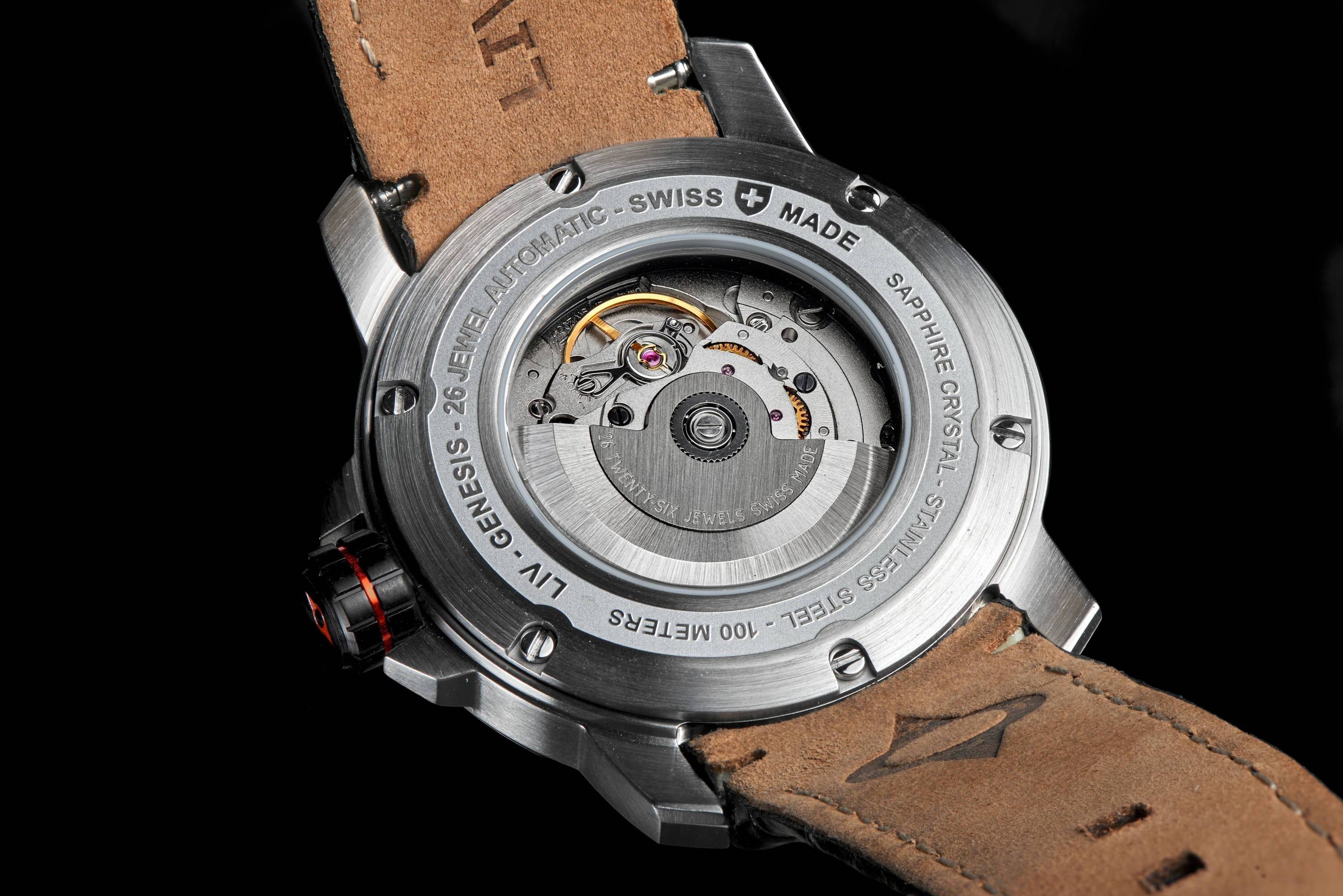My Shopping Bag
Your Bag is Currently Empty
Use code F10 FOR 10% off everything site-wide!
Use code F10 FOR 10% off everything site-wide!
Automatic watches are true top-tier timepieces. The mechanism automatically self-winds while you are wearing the watch. Any movement including walking, dancing, running for the bus will energise the mainspring and keep the watch ticking.

Automatic watches are true top-tier timepieces. Their finely made mechanisms are beautiful in their complexity, and are the movement of choice for many of the world’s leading watchmakers. And that makes them a sign of absolute quality.
But what is an automatic watch? Put simply, the mechanism automatically self-winds while you’re wearing it. So any kind of movement - walking, dancing, running for the bus… - will energise the mainspring and, providing you wear it enough, keep the watch ticking.
Inside each automatic watch is an intricate mechanism made up of a number of parts:
It’s the movement of these interconnected parts that makes sure your watch doesn’t stop.
When you wear your watch, every movement you make winds the spring, moves the gears and swings the rotor, a part of the watch that’s usually made from heavy metals like gold, platinum or tungsten. And it’s these metals that have enough power to wind the mechanism and help your timepiece tick.
While many automatic watches rely solely on movement to wind them up and get them going (which is why many watch enthusiasts keep theirs in specially made watch winders, designed to keep turning the watch so it never stops), some also give you the option to wind them manually. See our collection of manual-winding watches. This is a great option if you only wear your watch occasionally (and don’t have a fancy watch winder) - though always check the manufacturer's instructions before you attempt this, as it could damage the mechanism.
Of course, any watch you wear needs to be accurate. After all, there’s nothing more frustrating than a timepiece that’s out of time. Eventually, all watches drop a few seconds here and there as their mechanisms slow down, their batteries fail or - in the case of automatic watches - they’re not worn enough to keep them moving.
But what’s an acceptable level of accuracy for an automatic watch? Ideally, around 10 seconds a day (give or take a few seconds) - an accuracy rate of 99.9% - which means you’ll need to adjust the time every week or two.
Each watchmaker has its own set of specifications when it comes to accuracy, with Swiss-made watches usually having a better accuracy limit than Japanese-made watches. Ultimately, overall accuracy actually depends on the internal movement.
The higher the number of beats your watch has per second, the more accurate it is. And the better the accuracy, the better the materials that make up the mechanism.
Automatic watches have longevity, and, providing they’re looked after throughout their lives, this usually translates into an indefinite lifespan.
How can you make sure your automatic watch lasts forever? Here are a few tips:
These watches are made to be worn, so will stop ticking if they sit idle for any length of time. But this doesn’t mean they’ve stopped working. Simply wearing the watch and moving your arm, or winding it up again if it has a winding mechanism, is enough to power it up again.
Automatic mechanisms are designed for modern life, and when they’re fully wound and ready to go, they can typically last between 40-50 hours without additional winding. That’s because they store energy in their mainspring, so will keep time even when you’re not wearing them. Then all you need to do to power it back up is pop it on your wrist and go.
Quartz watches rely on a small quartz crystal and batteries to keep their internal mechanism moving. They have a host of features, including:
These watches have electronic movements, so are often easier to make and are therefore seen as less luxurious than automatic watches. And that makes them a more affordable option.
Automatic watches, on the other hand, have a complex mechanism that relies on exceptional craftsmanship and materials. They’re also:
Because of their intricate movements and the level of skill involved in making them, automatic watches are seen as luxury accessories, and are more expensive than their quartz counterparts.
Ultimately, both types of watch have their benefits, so the choice is really up to the wearer. While quartz watches are a great choice for everyday wear, many watch enthusiasts embrace the complexity and beautiful intricacy of automatic watches, and their longevity makes them a perfect choice for those who are looking to pass down a treasured possession to loved ones.
Whichever automatic watch you choose, the most important aspect to bear in mind is whether you love it enough to wear it regularly. Because that’s what determines its true value.
All watches featured in this story are available online from the WatchPilot website and in-store from our watch boutique retail store located in Richmond, just 30 minutes from Central London.
0 Comments
Please log in or sign up to leave a comment.